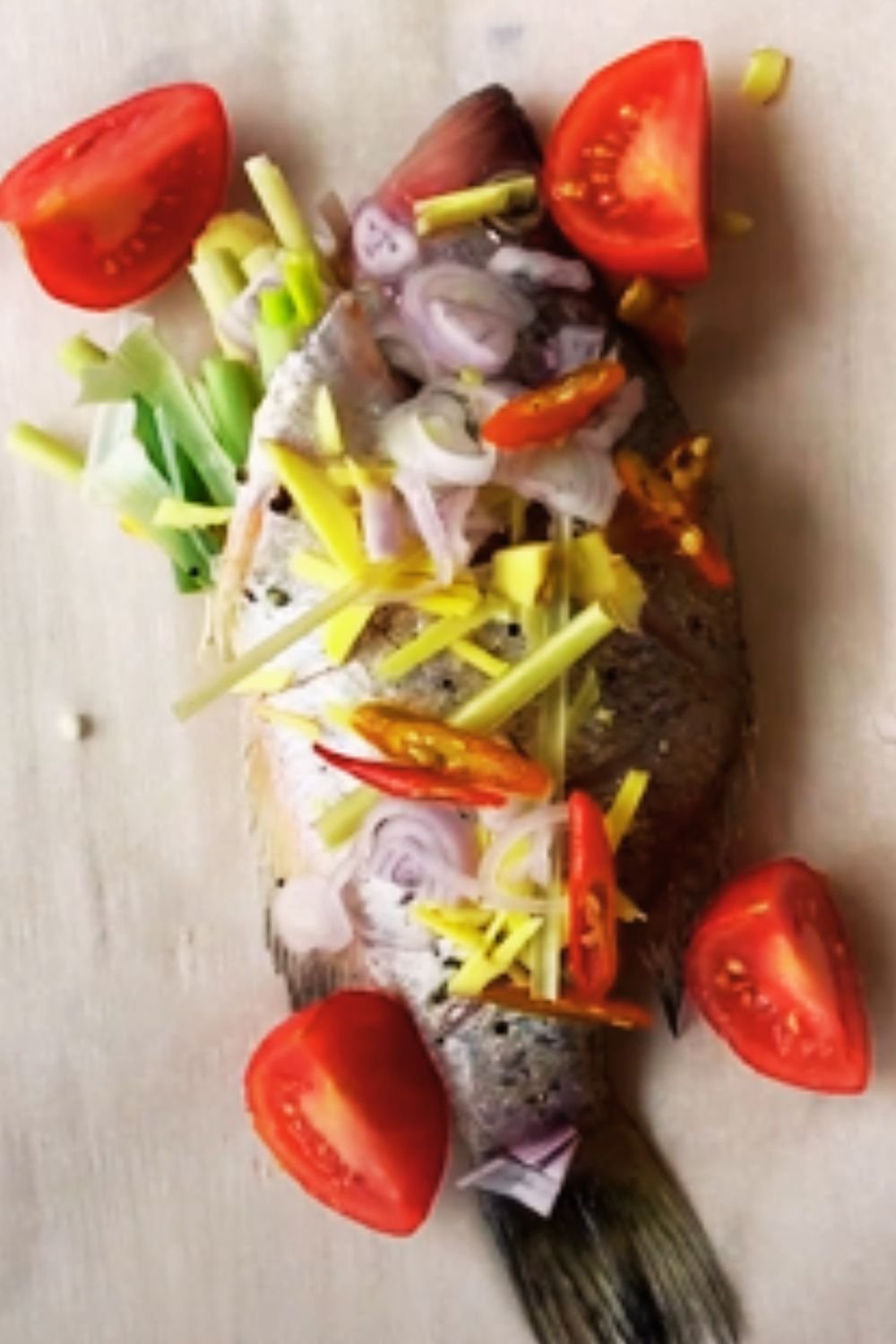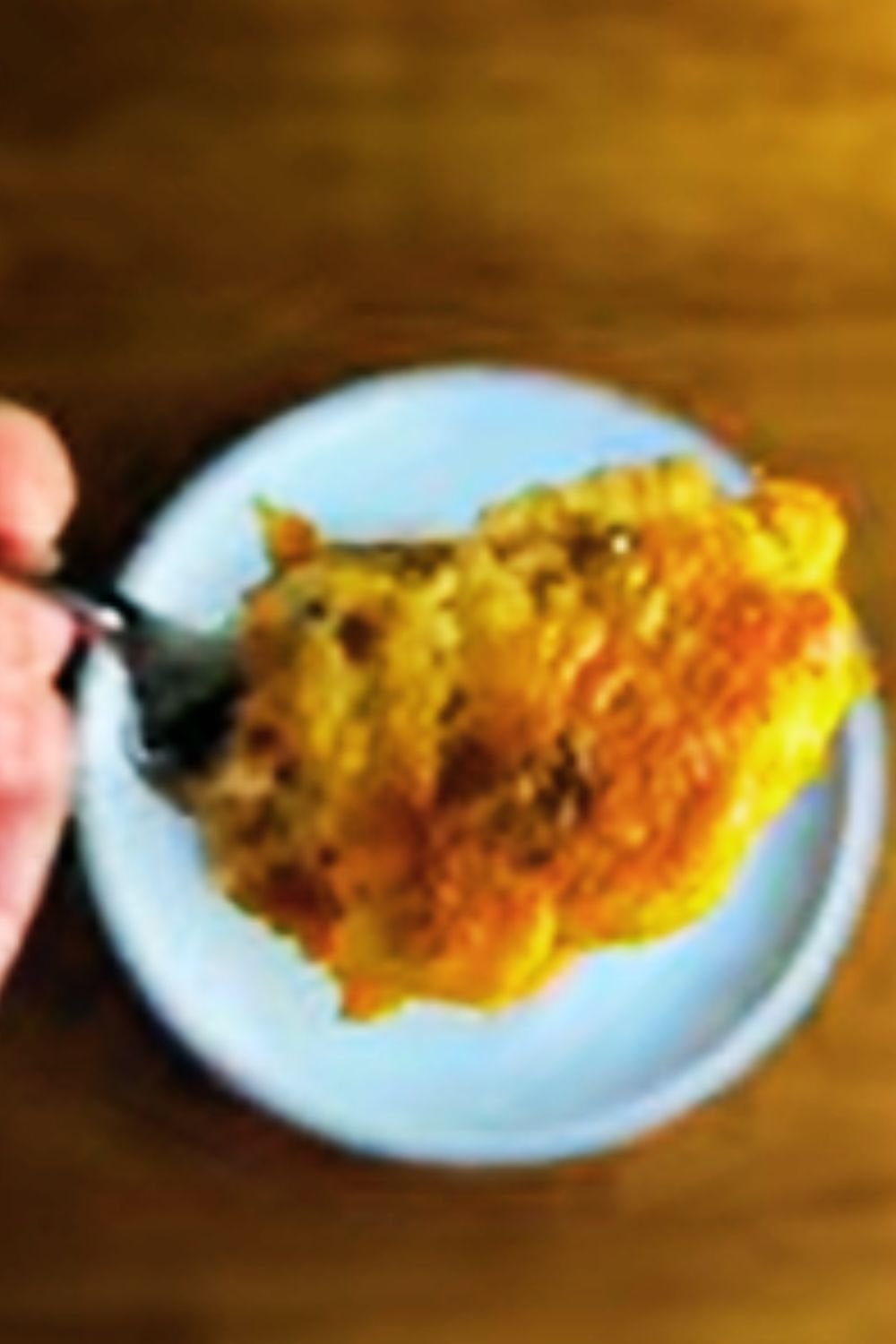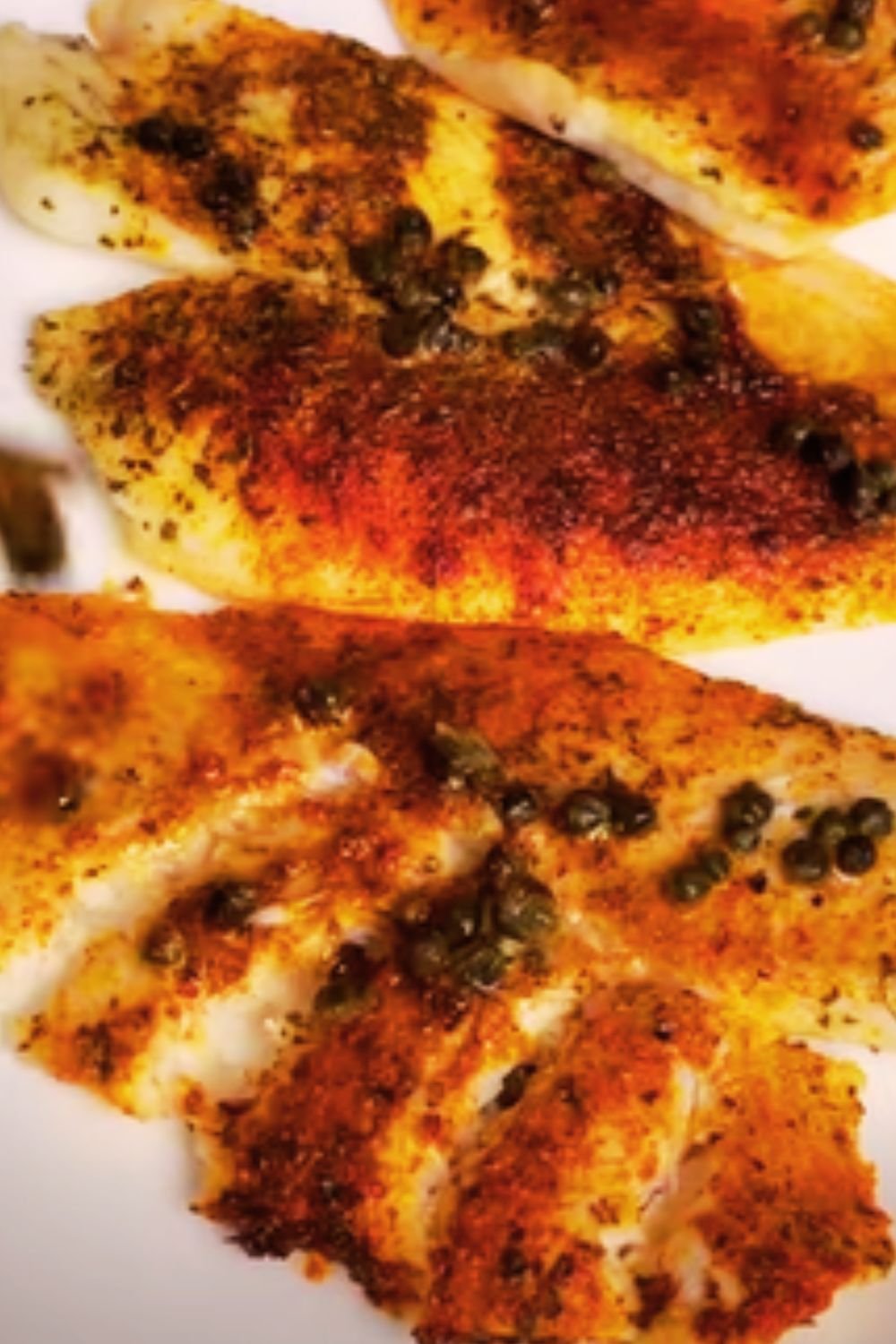There’s something almost magical about opening a parchment paper pouch at the dinner table. The steam rises, carrying with it the most incredible aromas of perfectly cooked fish and vegetables. The first time I tried this cooking method, I was absolutely blown away by how something so simple could create such an impressive result. Today, I’m sharing my favorite parchment pouch fish recipe featuring tender white fish and fingerling potatoes that will make you look like a culinary genius with almost zero effort.
As someone who juggles work, family, and trying to put healthy meals on the table, I’ve fallen head over heels for this cooking technique. The beauty of cooking “en papillote” (the fancy French term for cooking in parchment) is that it’s essentially a complete meal in one neat little package. The food gently steams in its own juices, resulting in incredible flavor while keeping everything moist and tender.
Why You’ll Love This Recipe
Before we dive into the details, let me tell you why this recipe deserves a permanent spot in your meal rotation:
- It’s practically foolproof – The parchment pouch method is incredibly forgiving, making it perfect for beginner cooks
- Cleanup is minimal – Everything cooks in its own little package, so there’s almost no cleanup required
- It’s customizable – You can switch up the herbs, vegetables, or even the protein based on what you have available
- The presentation is stunning – Each person gets their own parchment pouch to open at the table, creating a wonderful dining experience
- It’s incredibly healthy – The gentle steaming method requires very little added fat while maintaining all the nutrients in your ingredients
Ingredients You’ll Need
For the star of the show, I recommend using a mild white fish that cooks quickly and pairs well with the other flavors. Some excellent options include:
- Cod
- Halibut
- Tilapia
- Sole
- Sea bass
Here’s everything you’ll need to make this delicious meal (serves 4):
- 4 fillets (about 6 oz each) of white fish (I used cod in this recipe)
- 1 pound fingerling potatoes, sliced into ¼-inch rounds
- 2 medium lemons
- 4 tablespoons olive oil, divided
- 4 cloves garlic, minced
- 2 shallots, thinly sliced
- 1 bunch fresh thyme (about 8-10 sprigs)
- 1 bunch fresh dill (about ¼ cup chopped)
- 1 pint cherry tomatoes, halved
- 1 cup green beans, trimmed and cut into 2-inch pieces
- Salt and freshly ground black pepper
- 4 tablespoons butter (optional)
- Parchment paper (you’ll need 4 pieces, each about 15×15 inches)
Kitchen Tools You’ll Need
- Baking sheet
- Parchment paper
- Sharp knife and cutting board
- Mixing bowl
- Measuring spoons
- Kitchen twine or stapler (optional, for securing parchment)
The Magic of Cooking “En Papillote”
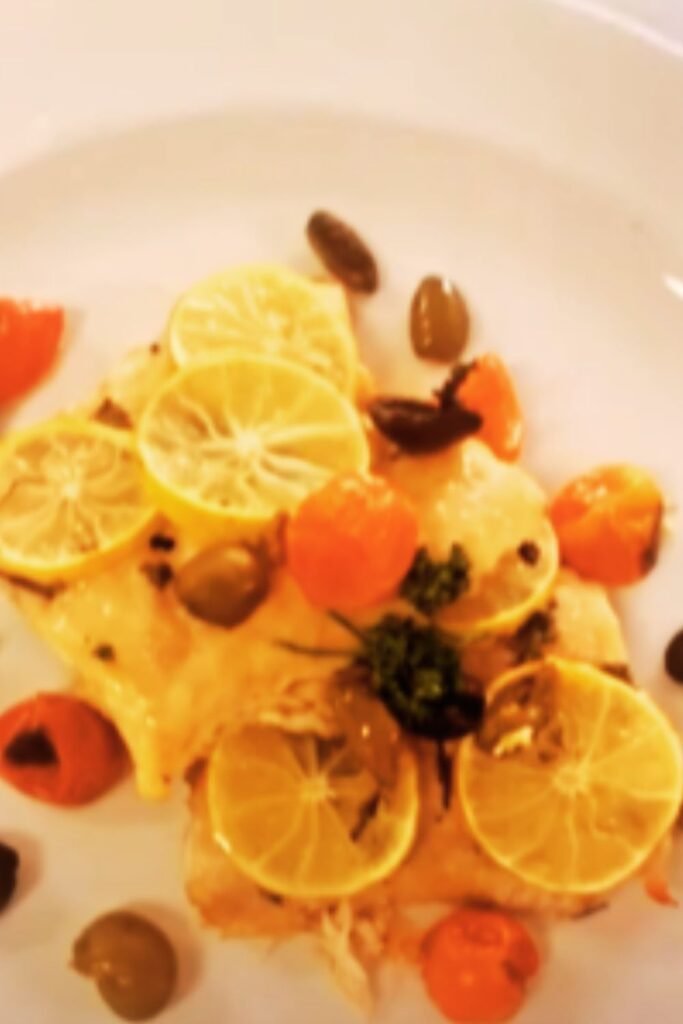
Cooking in parchment paper, or “en papillote,” is a technique that dates back centuries. The French perfected this method, but variations exist in cuisines around the world. The concept is brilliantly simple: food is sealed in a package and cooked with steam generated from its own moisture.
What makes this method so special is how it preserves the natural flavors of the ingredients. As the food cooks, the aromas and juices stay trapped in the parchment pouch, infusing everything with incredible taste. It’s like creating a mini flavor ecosystem for each serving!
Another major advantage is how healthy this cooking method is. Because you’re steaming rather than frying or sautéing, you need very little added fat. The natural moisture from the fish and vegetables keeps everything perfectly tender without drying out.
Step-by-Step Instructions
Preparing the Ingredients
- Preheat your oven to 400°F (200°C).
- Wash the fingerling potatoes thoroughly and slice them into ¼-inch rounds. The key here is to slice them thin enough to cook quickly but not so thin that they’ll fall apart.
- Trim the green beans and cut them into 2-inch pieces.
- Slice the cherry tomatoes in half.
- Thinly slice the shallots and mince the garlic.
- Zest one lemon and set aside the zest. Then cut both lemons into thin slices.
- Roughly chop the fresh dill and remove the thyme leaves from about half the sprigs.
Par-cooking the Potatoes
This is a crucial step that ensures everything finishes cooking at the same time:
- In a mixing bowl, toss the sliced potatoes with 2 tablespoons of olive oil, half of the minced garlic, salt, and pepper.
- Spread them on a baking sheet and roast for about 10-12 minutes, just until they begin to soften but aren’t fully cooked.
- Remove from the oven and let them cool slightly while you prepare the parchment packages.
Assembling the Parchment Pouches
- Cut four large squares of parchment paper, approximately 15×15 inches each.
- Fold each square in half, then open it up again. You’ll place all ingredients on one half, then fold the other half over.
- Divide the par-cooked potatoes among the four pieces of parchment, placing them in the center of one half of each square.
- In a bowl, toss the green beans and cherry tomatoes with the remaining olive oil, garlic, shallots, thyme leaves, half of the chopped dill, salt, and pepper.
- Divide this vegetable mixture evenly among the four parchment pieces, arranging it on top of the potatoes.
- Pat the fish fillets dry with paper towels and season both sides with salt and pepper.
- Place one fillet on top of each vegetable pile.
- Top each fillet with:
- A few lemon slices
- A sprinkle of lemon zest
- A sprig of thyme
- A small pat of butter (about 1 tablespoon per pouch, if using)
- A sprinkle of the remaining fresh dill
Sealing the Pouches
This part is surprisingly fun and easier than you might think:
- Fold the empty half of the parchment over the ingredients.
- Starting at one corner, make small overlapping folds all along the open edges, working your way around until you’ve completely sealed the pouch.
- Make sure the seal is tight so no steam escapes during cooking.
- If you’re having trouble keeping the pouches closed, you can use kitchen twine to tie them or even staple the edges (just remember to warn your dinner guests about the staples!).
- Place the sealed pouches on a baking sheet.
Baking
- Place the baking sheet with the parchment pouches in the preheated oven.
- Bake for 15-18 minutes. The exact time will depend on the thickness of your fish fillets.
- You’ll know they’re done when the pouches have puffed up and the parchment has turned a light golden brown.
How to Serve
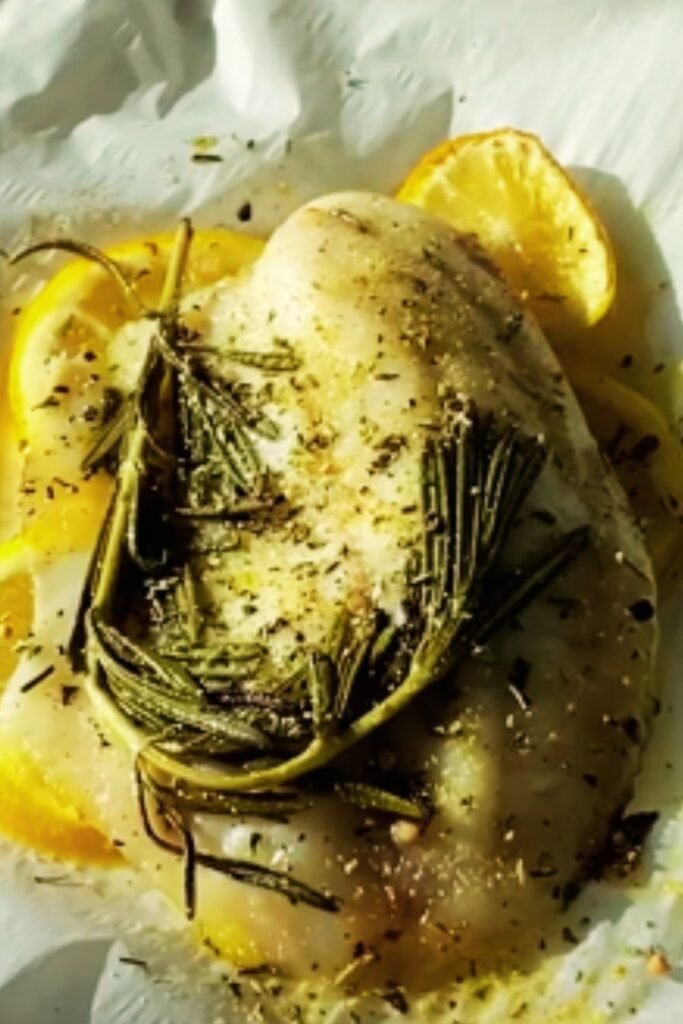
Here’s where the real magic happens:
- Transfer each parchment pouch to a dinner plate.
- Bring them to the table still sealed.
- Allow each person to open their own pouch (carefully – the steam will be hot!).
- The dramatic reveal of the beautifully cooked fish and vegetables, along with the release of amazing aromas, makes for a special dining experience.
I like to serve these pouches with a simple green salad dressed with lemon vinaigrette. The acidity of the dressing complements the delicate flavors of the fish perfectly.
Serving Suggestions
- Crusty sourdough bread makes a perfect accompaniment to soak up all the incredible juices
- A crisp green salad with a light vinaigrette balances the meal nicely
- For a heartier option, some fluffy quinoa or brown rice works wonderfully
- A chilled glass of sparkling water with a squeeze of lemon and some fresh herbs makes a refreshing beverage pairing
- For dessert, keep it light with fresh berries and a dollop of whipped cream
Nutrient Profile and Health Benefits
This dish isn’t just delicious – it’s incredibly nutritious too! Here’s a breakdown of what makes it so good for you:
| Nutrient | Amount Per Serving | Health Benefit |
|---|---|---|
| Protein | ~30g | Supports muscle maintenance and growth |
| Omega-3 Fatty Acids | 1-2g (varies by fish type) | Promotes heart and brain health |
| Potassium | ~900mg | Supports healthy blood pressure |
| Vitamin C | ~45mg | Boosts immune function |
| Vitamin A | ~1500 IU | Supports eye health and immune function |
| Fiber | ~5g | Aids digestion and promotes fullness |
| Iron | ~2mg | Supports oxygen transport in the body |
| Calories | ~350-400 | Moderate calorie meal with high nutrient density |
Variations to Try
One of the things I love most about this cooking method is how versatile it is. Here are some of my favorite variations:
Different Fish Options
- Salmon: Rich in omega-3s and stands up well to bold flavors
- Shrimp: Cooks quickly and pairs beautifully with the vegetables
- Trout: Has a delicate flavor that’s enhanced by the herbs
Vegetable Swaps
- Asparagus: Fantastic in spring when it’s in season
- Zucchini ribbons: Quick-cooking and absorbs flavors beautifully
- Thinly sliced fennel: Adds a subtle anise flavor that pairs wonderfully with fish
- Bell peppers: Add sweetness and beautiful color
Herb and Seasoning Ideas
- Mediterranean: Use oregano, basil, and olives
- Asian-inspired: Try ginger, scallions, and a splash of soy sauce
- Southwestern: Include cilantro, lime, and a touch of cumin
Troubleshooting Tips
Even though this recipe is pretty foolproof, here are some solutions to potential issues:
If your fish isn’t cooked through:
- Make sure your fish fillets are relatively even in thickness
- For thicker pieces, you may need to add a few extra minutes to the cooking time
- If using frozen fish, ensure it’s completely thawed before cooking
If your vegetables are undercooked:
- The par-cooking step for potatoes is crucial – don’t skip it!
- Cut vegetables into smaller, thinner pieces for faster cooking
- Arrange harder vegetables on the bottom of the stack, closer to the heat source
If your parchment tears:
- Double up the parchment if needed
- Make sure not to overfill the pouches
- If you’re concerned about tearing, you can use aluminum foil instead (though you’ll lose some of the presentation factor)
Make-Ahead Tips
While this dish is best prepared fresh, there are ways to prep ahead:
- Slice all vegetables up to 24 hours in advance and store in airtight containers in the refrigerator
- Par-cook the potatoes up to 6 hours ahead of time
- Prepare the herb and garlic mixtures earlier in the day
- Assemble the entire pouches up to 4 hours before cooking and keep refrigerated until ready to bake
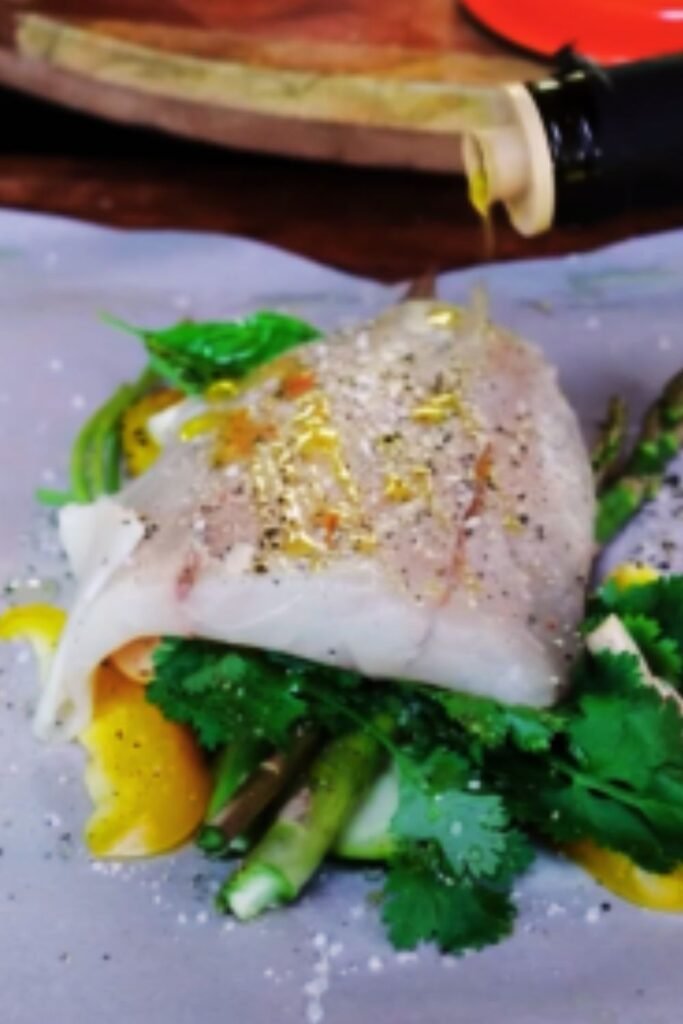
My Personal Journey with Parchment Cooking
I discovered this cooking method during a particularly hectic time in my life when I needed meals that were quick, healthy, and didn’t create a mountain of dishes. What started as a practical solution quickly became one of my favorite ways to cook fish.
There’s something almost therapeutic about folding those parchment pouches, like creating little presents filled with delicious food. And I’ve found it’s a fantastic way to get my family excited about eating fish. Even my formerly fish-averse nephew now requests “fish presents” when he comes for dinner!
Over time, I’ve experimented with countless variations, but this combination of fingerling potatoes, fresh herbs, and seasonal vegetables has remained my gold standard. The potatoes soak up all the wonderful flavors from the fish and herbs, becoming little flavor bombs themselves.
Sustainability Note
When purchasing fish for this recipe, I strongly encourage looking for sustainable options. The Monterey Bay Aquarium’s Seafood Watch program offers excellent guidance on choosing fish that is both environmentally responsible and low in contaminants. Many grocery stores now label their seafood with sustainability information, making it easier than ever to make ocean-friendly choices.
Frequently Asked Questions
Can I use aluminum foil instead of parchment paper? Yes, you can use foil if that’s what you have on hand. The cooking method will work similarly, though you won’t get the same puffed presentation that parchment provides. If using foil, I recommend lightly oiling it to prevent sticking.
How do I know when the fish is done without opening the pouch? The timing in the recipe (15-18 minutes) is generally reliable for most white fish fillets that are about 1-inch thick. The parchment will puff up and turn light golden brown when the contents are properly steamed. If you’re concerned, you can make a small tear in one pouch to check.
Can I prepare these pouches ahead of time? You can assemble the pouches up to 4 hours before cooking and keep them refrigerated. I wouldn’t recommend preparing them the day before, as the vegetables and fish might release too much moisture and make the parchment soggy.
What if I don’t have fingerling potatoes? Regular potatoes work fine! Just cut them into smaller pieces (about ½-inch cubes) so they cook in the same amount of time. Baby potatoes or new potatoes are also excellent alternatives.
Can I make this recipe vegetarian? Absolutely! Replace the fish with thick slices of portobello mushrooms or a block of extra-firm tofu. You may want to marinate either option for about 30 minutes before assembling the pouches for extra flavor.
My market doesn’t have fresh dill. What can I use instead? Fresh parsley, tarragon, or chives would all work wonderfully as substitutes for the dill.
Is there a way to tell if my pouches are properly sealed? A good test is to hold your hand near the edges after folding – you shouldn’t feel any air escaping. The folds should be tight and overlapping, almost like pleating.
Can I reuse the parchment cooking liquid? The liquid that collects in the pouches is absolutely delicious! While I typically serve it with the fish, you could certainly save it to use as a base for a quick sauce or to add flavor to rice or other grains.
Final Thoughts
There’s something truly special about a cooking method that combines simplicity, healthfulness, and a touch of drama at the dinner table. Parchment pouch cooking checks all these boxes while delivering incredible flavor. I hope this recipe becomes a favorite in your household as it has in mine.
The next time you’re looking for a dinner that feels special but doesn’t require hours in the kitchen, remember this technique. It’s transformed countless weeknight dinners in my home from mundane to memorable, and I’m confident it will do the same for you.
Happy cooking!
